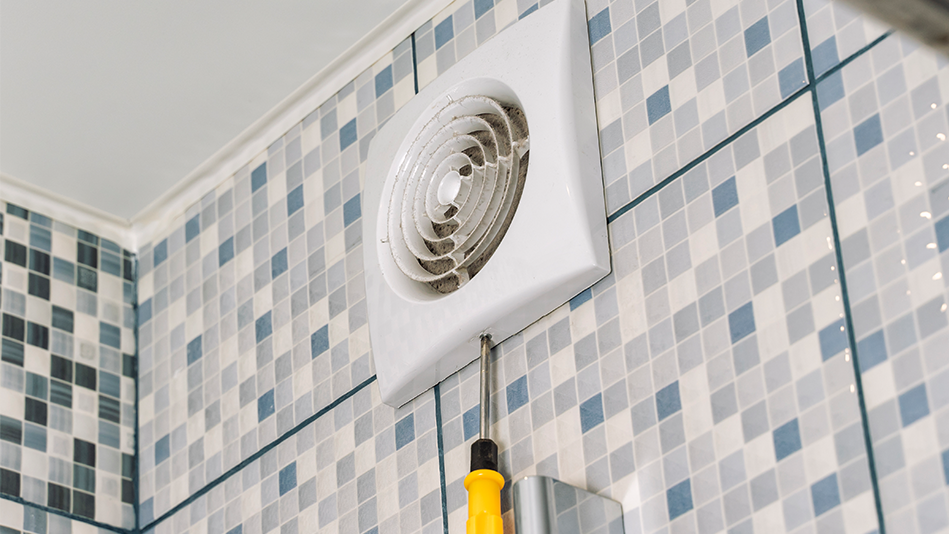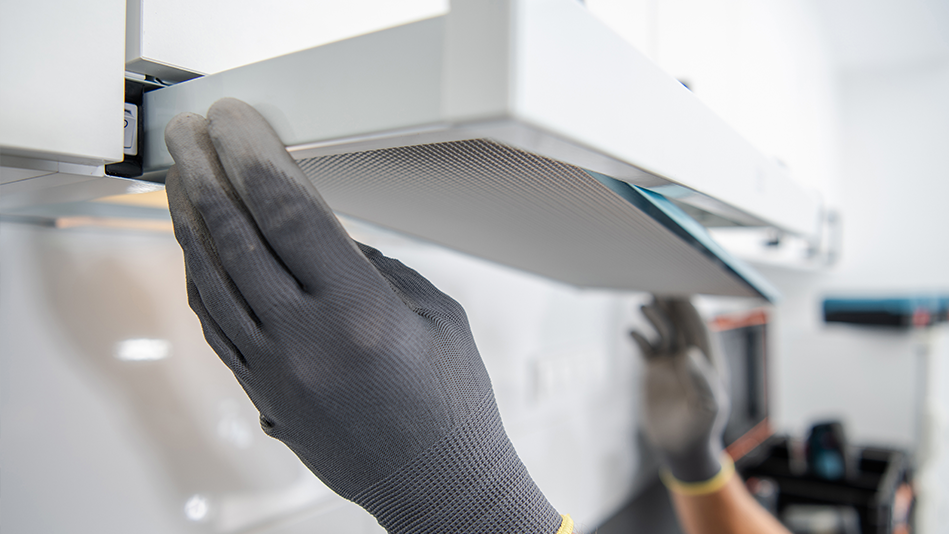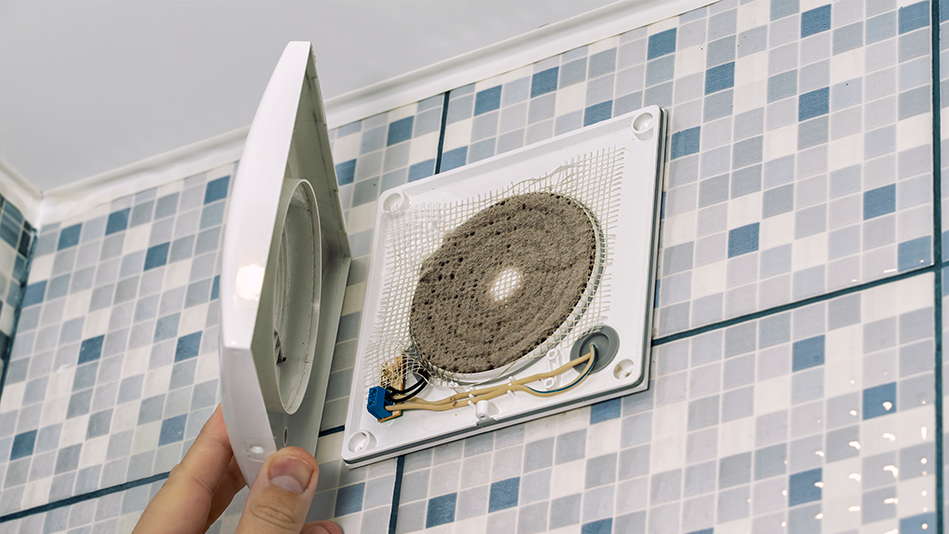When the smoke alarm goes off because someone burnt the bacon, you flip your cooktop’s exhaust fan on to help clear the air. Then someone takes over the bathroom with an hour-long, scalding shower, and the exhaust fan is on in there, too. Could two rooms be more different? Yet both exhaust fans need the occasional cleaning to keep them working effectively. These tips can help you do that—but why do you need to?
How do exhaust fans work, anyway?
When it’s turned on, an exhaust fan actively ventilates air from an internal room of your home to the outdoors. This is useful in a number of ways:
- Steam removal: Excess steam (from hot showers or boiling water) often clings to objects in the form of condensation, especially in small rooms. This can cause wear on paint and wallpaper, lead to mold and mildew growth, and even get into support beams and eat away at the integrity of your home’s structure over time.
- Clearing smoke/fumes: Burning stuff on the stove happens more often than we’d like to admit, and a quick flip of that exhaust fan switch helps to get that nasty smoke out of the kitchen. It’s also handy for removing leftover fumes from aerosols (like hairspray), or when you accidentally leave a plastic or rubber utensil too close to the burners.
- Scent/Odor dissipation: Whether it’s chopped onions in the kitchen or a bad day in the bathroom, exhaust fans can help remove offending smells from the area more quickly.
- Grease reduction: If you’ve ever used a non-stick spray, then you know how fine grease particles can get into the air, making everything they land on feel greasy and attract dust. Your stovetop exhaust fan can help capture those airborne grease particles before they land on your other accessories.
- Redirecting heat: In the middle of summer, using your stove or oven releases extra heat into the home you’re trying to keep cool. Your exhaust fan can redirect that extra heat outdoors, giving your air conditioner a break from actively fighting against the heat from your stove.
In doing what they were made to do, however, exhaust fans suck up various particles that can stick to the fan blades and mechanism over time. Too much buildup can reduce the effectiveness of the exhaust fan, wear down the motor, and eventually cause it to get stuck—but you can extend the lifespan of each exhaust fan by cleaning it once or twice a year.
Maintaining your bathroom exhaust fan
Start by shutting off the power to the exhaust fan at your circuit breaker. You may be able to gently pull the cover right down and squeeze a couple of tension clips to release it, though some covers are attached with screws. Once it’s fully detached, wash the cover in some warm water and dish soap.
While that’s drying, get into your exhaust fan mechanism with a vacuum attachment or a can of compressed air to remove the majority of the dust buildup. (We recommend some safety glasses and a basic cotton mask for this task, in order to prevent dust inhalation and protect your eyes.)
Finish off any remaining dust with a dusting cloth, being careful not to damage any blades or mechanisms. Make sure the cover is thoroughly dried and reattach it.
Kitchen exhaust fan maintenance
Shut off the power source to the kitchen exhaust fan before maintaining it, whether that’s unplugging it or turning it off at the circuit breaker. Next, you’ll need to identify your exhaust fan’s model-specific requirements to clean it. Why so specific? Grease.
Not all grease filters are alike
Depending on your exhaust fan model, your grease filter will be designed to either be cleaned and reused or thrown away and replaced.
Different cleaning materials
Different models may have different requirements for what cleaning materials you can use safely, without damaging your unit. Your fan’s documentation should provide an approved list of cleaners you can use. If you don’t have the fan’s documentation handy, determining your model should allow you to locate it online.
Cleaning up
For fans with reusable grease filters, the easiest way to remove the grease is to soak the filter in boiling water for a few minutes, and finish it off with a good scrub in soapy water with a nylon bristle brush.
Regardless of whether the grease filter is reusable or needs to be replaced, it’s likely that some grease will have gotten past it and onto the fan blades. These will need those approved cleaners, some patience, and some solid elbow grease to get through the grime. Once you’ve gotten everything cleaned, thoroughly dried, reassembled, and reinstalled, you can reconnect the power source.
Maintenance only goes so far
All appliances and home systems have a lifespan. When your exhaust fan’s time is up, are you ready to cover the cost of replacement? America’s Preferred Home Warranty (APHW) can help. Discover how our home warranty coverage can help save you money, or call 866.311.5712 today to learn more.
Visit us on Facebook, LinkedIn, Twitter or Instagram to tell us your thoughts!



